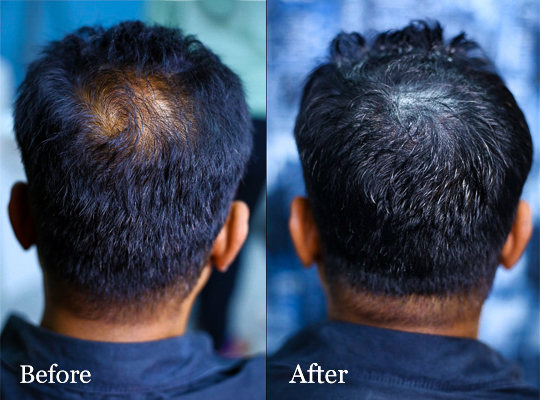Scalp pigmentation

Scalp pigmentation, also known as scalp micropigmentation or SMP, is a non-surgical cosmetic procedure that involves depositing pigment into the scalp to create the appearance of a fuller head of hair or to camouflage areas of hair loss or thinning.
The procedure is typically performed by a trained technician using a specialized tattooing machine or handheld device. The technician carefully matches the pigment color to the client's natural hair color and skin tone to achieve a realistic and natural-looking result.
The procedure involves creating tiny, layered dots or strokes on the scalp to mimic the look of hair follicles. The density and placement of these dots or strokes are customized to suit the individual's desired look and hair loss pattern.
Scalp pigmentation can be used to address various hair loss concerns, including:
1. Receding hairline: By strategically creating hairline and density patterns, scalp pigmentation can create the illusion of a fuller, more defined hairline.
2. Thinning hair: Pigment can be applied to areas of the scalp with thinning hair to give the appearance of increased hair density.
3. Bald spots or patches: Scalp pigmentation can help camouflage areas of complete or partial baldness, making the scalp appear as if it has a closely shaved or buzzed hairstyle.
After the procedure, it's important to follow the technician's instructions for aftercare, which may include avoiding excessive sweating, sun exposure, and certain hair products for a specified period. The technician will provide detailed guidelines to ensure proper healing and longevity of the scalp pigmentation.
It's important to note that scalp pigmentation is a cosmetic procedure and should be performed by a skilled and experienced professional. It's crucial to have a consultation, discuss your expectations and concerns, and ensure that you choose a reputable technician before proceeding with scalp pigmentation.

